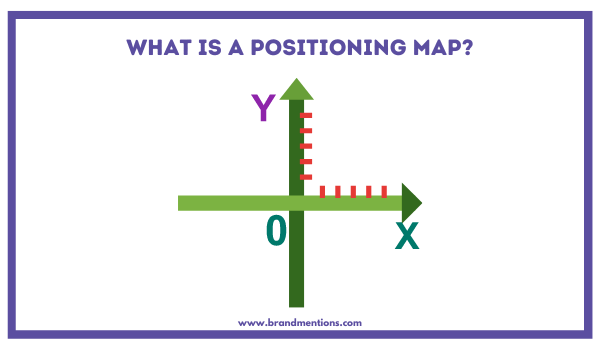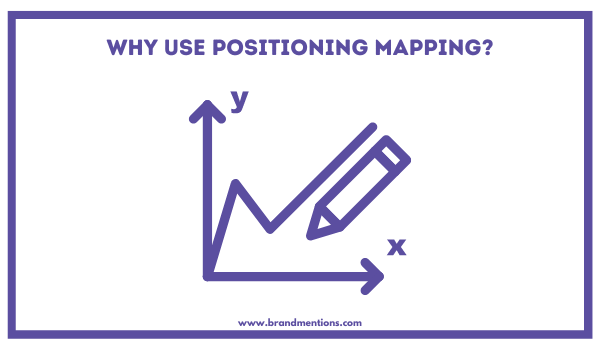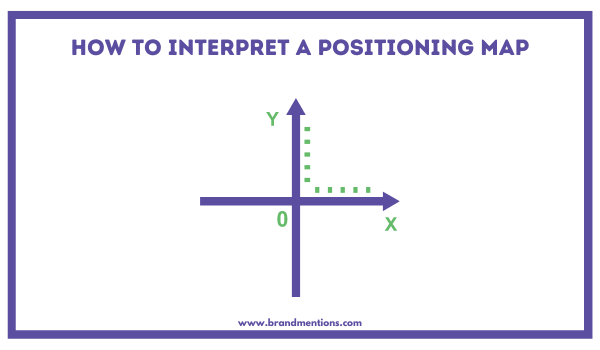Positioning Map
Contents
What is a Positioning Map?
A positioning map is a concept that helps a brand determine how it positions itself in the market. It illustrates the range of “positions” that a product or brand can take in the market based on two dimensions that are important to customers.

Why Use Positioning Mapping?
To illustrate the positioning of your brand, take a pen and paper, a tablet, or an online whiteboard. Then, follow these steps:
1. Draw two perpendicular lines: the x and y-axis.
2. Pick two parameters relevant to your market segment. For example, if your brand sells t-shirts, you can choose quality and design as parameters that indicate purchasing decisions. Ideally, you should have your market research done to pull data about the consumer's perception.
Types of dimensions for the positioning map:
The most commonly used dimensions are related to price and quality. But there can be a variety of other dimensions, such as:
- High or low-volume market
- Necessity or luxury
- Simple or complex
- Healthy or unhealthy
- Low-tech or High-tech
- International or local
3. Create a list of all your competitors. Find the companies that offer products similar to yours. If you are unsure how to find your competitors, you should use web and social media listening to find out who they are.
4. Rate your competitors based on the parameters that you have established for your map and place them on the graph. This will help with identifying their brand or product positioning.
5. Rate your own brand or products and place them on the graph. Therefore, you will effectively see your position in relation with your competitors.
6. Interpret the map. This step helps you discover your brand’s strengths and weaknesses, identify your competitor’s positioning strategies and identify gaps in the market.

How to Interpret a Positioning Map?
Let’s say that you are trying to figure out the price parameter versus the quality parameter. Now that you have the illustration in front of you, you can easily see if your brand sells at a higher or a lower price than your competitors. If there is there a space or gap with little or no competition illustrated, then this quadrant represents a gap in the market. For instance, there may be a gap in the quadrant that illustrates a medium product at a medium price range. With the help of product management, competitive strategy, and marketing campaigns, you can attract potential customers who are willing to pay a little bit more, for a better quality product.

Additional Tips
- Although challenging, positioning or perceptual maps are based on the buyer's perception, so always have your target audience in mind.
- Try envisioning the customer journey and seeing where you can improve their experience.
- Don’t compare apples to oranges. Stick with the product category that your products belong to.
- Employ social listening to find out more about the leading position competing products on the market, but also as a way to create fitting content marketing campaigns for your target audience.
Offer intangible benefits. You can add value to your offer by enhancing user experience, increasing compliance, or increasing market position.